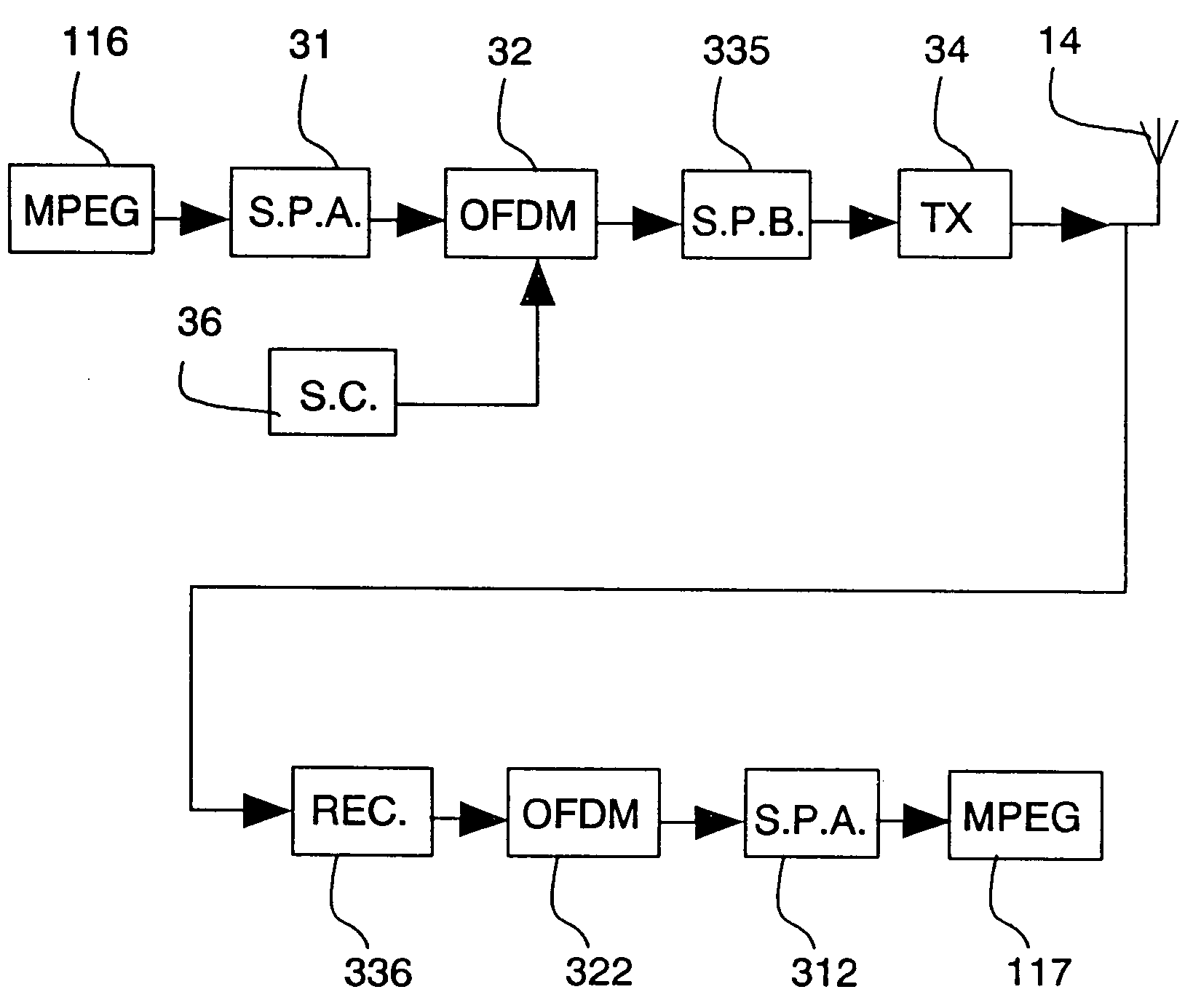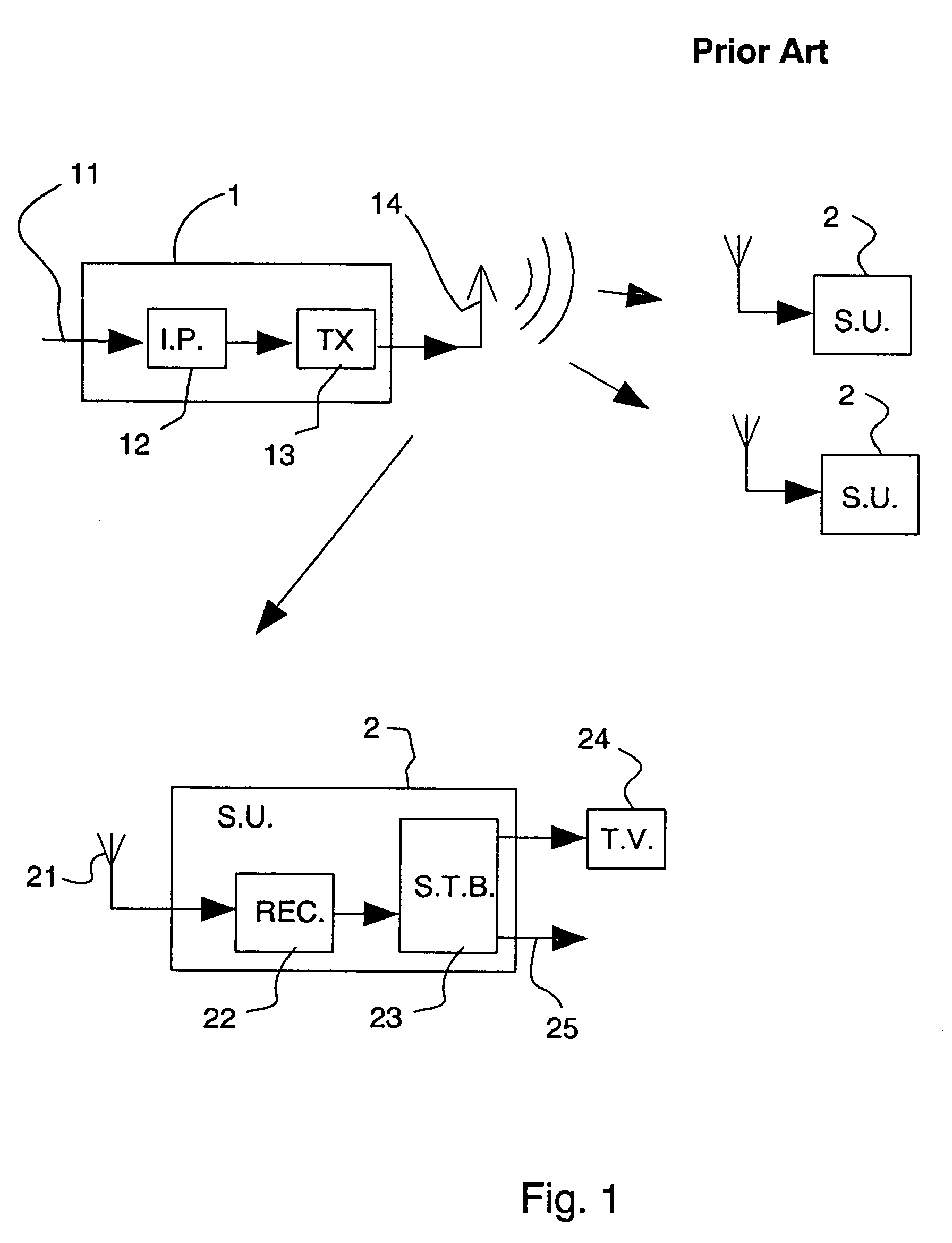Bi-directional communication channel
a communication channel and bi-directional technology, applied in the field of video, voice and data transmission, can solve the problems of unidirectional operation of dvb-t systems, unidirectional flow of information, slow and inconvenient method, etc., to achieve relaxed timing requirements, improve orthogonality, and improve performance.
- Summary
- Abstract
- Description
- Claims
- Application Information
AI Technical Summary
Benefits of technology
Problems solved by technology
Method used
Image
Examples
examples of afc embodiments
1. AFC means 872 sends data from the base station to each subscriber unit, to control its frequency so as to achieve nearly orthogonality between subscriber units transmitting to the same base station.
[0371]As the base station AFC means 872 detects deviations in the frequency of a mobile unit, it sends correction signals to the mobile unit. The mobile unit corrects its transmit frequency accordingly, so as to be received at the required frequency in the base station. The base station corrects the individual frequency deviation in each mobile unit.
2. A preferred embodiment of AFC is achieved with means in the mobile unit for correcting for frequency deviations. The mobile system implements the following method:
[0372]A. A signal is received from the base station and is used to achieve a frequency-lock or phase lock to the base station. The mobile unit may lock on a pilot signal from the base station.
[0373]Frequency lock may be achieved, for example, using phase lock loop PLL means. In...
PUM
 Login to View More
Login to View More Abstract
Description
Claims
Application Information
 Login to View More
Login to View More - R&D
- Intellectual Property
- Life Sciences
- Materials
- Tech Scout
- Unparalleled Data Quality
- Higher Quality Content
- 60% Fewer Hallucinations
Browse by: Latest US Patents, China's latest patents, Technical Efficacy Thesaurus, Application Domain, Technology Topic, Popular Technical Reports.
© 2025 PatSnap. All rights reserved.Legal|Privacy policy|Modern Slavery Act Transparency Statement|Sitemap|About US| Contact US: help@patsnap.com



